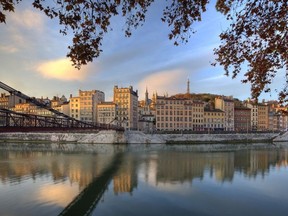
Reviews and recommendations are unbiased and products are independently selected. Postmedia may earn an affiliate commission from purchases made through links on this page.
Article content
As the eyes of the world turn to Paris and the upcoming Summer Olympics, it is a perfect time to remember that France is more than its famous capital.
And when it comes to drinking, dining and exploring, there’s no better place than the cultural and historical treasure that is the wonderful city of Lyon, nestled between the mighty Rhône and Saône rivers in northern Provence.
Advertisement 2
Article content
Article content
Lyon is the third largest city in France, after Paris and Marseille, but second only to the capital with its glorious cuisine and vibrant arts scene. It remarkably manages to foster a cozy, small-town feel amidst plenty of sights, sounds, and flavors to savor.
Some days it’s easy to imagine you’re the only tourist in town, an experience that those impatient crowds lining up to get into the Louvre won’t be privy to.
First of all, this is a city that loves food and rightly so. Top chefs are celebrated like Hollywood movie stars; Witness the large mural of culinary genius and local boy Paul Bocuse adorning a wall in front of the magnificent food hall named after him. (A biennial world chefs tournament is also named after him.)
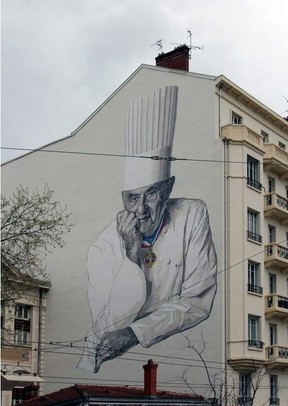
However, Lyon’s culinary fame has its roots in more modest circumstances, proving that when the world serves you lemons it is possible to make more than just lemonade.
Many working-class women here were employed as cooks by the city’s aristocratic families, but after France went through the horrors of the First World War, the political, social and financial world changed: the result was that these women were dismissed from their positions. publications.
Article content
Advertisement 3
Article content
Having few other skills, they turned to what they knew best: cooking. They began offering popular dishes to the ordinary people of Lyon, using fresh and local ingredients. Soon their fame spread and the special meals they prepared from scratch eventually became famous beyond the city’s borders. Today they are known collectively as Les Meres Lyonnaises (the mothers of Lyon) and their cuisine remains the basis of a global reputation for fine dining.
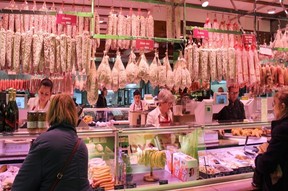
Where is it best to try such food? Well, with over 4,000 restaurants, the choice is on the menu. So, do what the locals do. The first port of call should be a bouchon establishment serving traditional food. Las Fines Gueules, under the gaze and hands of chef Joel Salzi in the old town, are the best.
Mingle with the locals, who can turn lunch into an all-afternoon affair with a little persuasion, and try everything from Burgundy snails to homemade oxtail terrine and beef tripe. And why not live a little and immerse yourself in the authentic Lyonnais culture with a tasting of breaded pig’s trotters?
After such a lunch, it is not surprising that dinner can only be enjoyed after a good six-hour interval. Work up an appetite by visiting some of the wonderful Gallo-Roman ruins that dot the city; The two ancient open-air theaters draw attention, offering a glimpse of the importance that the Romans gave to Lyon as part of their empire. During the summer, they come to life again and host concerts, theater and dance evenings.
Advertisement 4
Article content

Nearby is the imposing Notre-Dame Basilica, which offers stunning views of the city. In 1870, the Bishop of Lyon undertook to erect a suitable monument to the Virgin Mary if the Prussian invaders would forgive him. They did and he carried on, with more than a little help from 2,000 builders and craftsmen.
Just down the hill (you can take the handy funicular) is St. John’s Cathedral, resplendent in the old town square, especially at night when the main buildings are illuminated.
With its strategic location between two large rivers, Lyon was not only an attraction for the Romans. Centuries later, it became an important commercial center and from that mercantile history emerged the silk trade, which eventually turned Lyon into a world center of weaving.
Although that dominance has waned, Lyon still enjoys a reputation for its elaborate silk art in specialty shops. It is also home to several museums that pay tribute to the craft, including the Brochier Museum; a running business showing 130 years and four generations of a family that began working with fine silk in 1890.
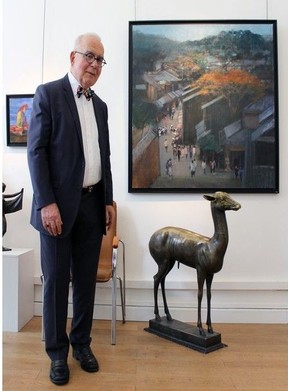
These family-owned businesses are the business heart of the city: places like Galerie Saint Hubert, where owner Hubert Kilardjian still greets customers with the grace and charm he first displayed when opening the art gallery half a century ago, and the Chai St Olive, where two brothers bring freshly squeezed grape juice from nearby vineyards and carry out all the winemaking processes in the heart of the city to create unique wines.
Advertisement 5
Article content
Lyon is easy to navigate with an excellent public transport system. For our stay we chose the four-star Grand Hotel des Terreaux, a stately hotel, recently renovated and located in the heart of the city.
And once again, when it comes to dining, Lyon is a constant delight. Given how sumptuous lunch can be (we also enjoyed a fabulous midday meal at the famous Brasserie des Brotteaux, which recently celebrated its 110th anniversary), it’s customary to make dinner time late.
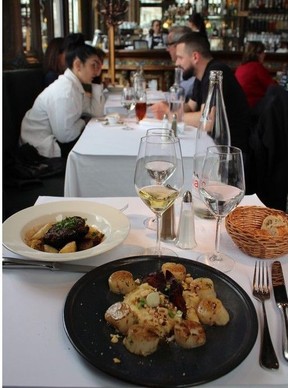
Pimousse customers can watch chef Pierre-Michael Martin in the open kitchen preside over a wide variety of dishes. On a first visit, put yourself in their hands and be surprised by the feast that arrives, plate by plate, to your table.
Finally, there is Tetedoie, designed and named after Michelin-starred chef Christian Tetedoie, who was once a student of the famous Paul Bocuse. The restaurant has city views and offers classic French food; So heavenly that many diners describe their food as the best they have ever had
It is a perfect ending to a perfect stay.
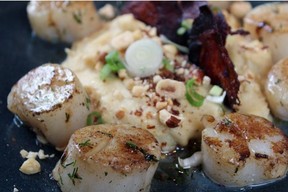
Article content
